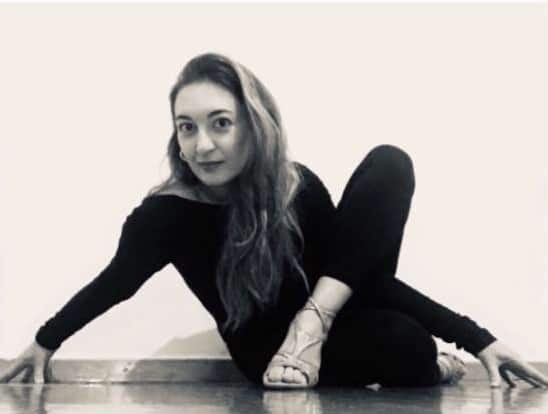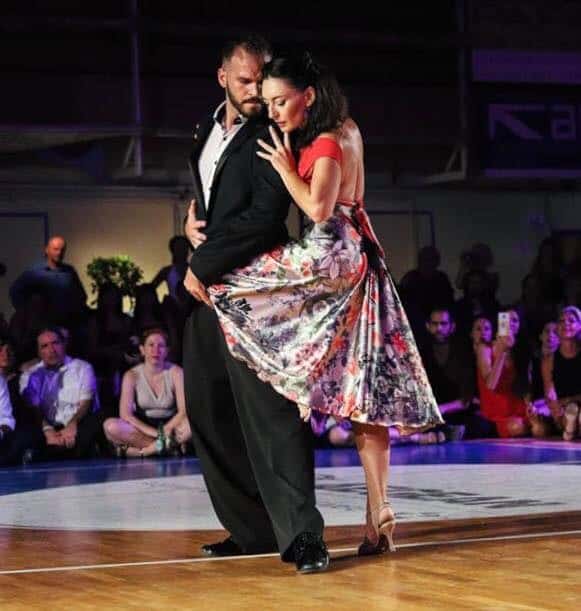How to answer tango questions easier – a simple tool

Bend or stretch, point or heel, open or close? Tango is magical. But sometimes, it might feel as if the more tango questions you ask, the more confused you get. Let’s explore how you can create some clarity in your tango.
To start dancing, we need some rules to follow, some directions to define our path. But as we spend more time studying all these rules, they start to conflict with each other and don’t seem to make any sense.
Should you bend or stretch the knees, point your toes, or use your heels for the forward step, open or close the embrace? And where exactly to put the arm and palm of the close side of the embrace? Should we dance totally straight or in a Λ position? How to recognize the right and the wrong technique? Why use high heels and not flat shoes. Is it a matter of style? So many tango questions.
Those are the debates that expose students to dilemmas and confusion.
What is correct, what is true? They seem contradictory, and it is normal to assume that you should choose one principal to apply and stay focused on that one. And when you get used to that choice, it defines your dance, and all others feel wrong. But what if we could explore all the potential every choice gives us and then choose each time accordingly to serve a purpose?

Removing the confusion by asking the right tango questions
Let’s explore different tango questions:
Side steps
For example, what difference does it make to the size of a side step if you decide to bend the knees or stretch them? Does it make your dance more difficult or better? Or is it just different?
Forward steps
What are the abilities of your body, referring to the forward step? Do you get the same result when you choose to point or when you use the heel? And a question that might seem bizarre: can you have all the qualities of a step (small, big, fast, etc.) using the same approach?
Embrace
What are the strong points and weaknesses of each embrace? Do you have the same space, the same stability, the same connection with all of them? Could you express yourself the same way with all kinds of embraces?

Tango considerations
After answering these tango questions, you will realize that all these options are not an “either/or” case but tools to use any time you need them. They give several expression skills to your body, and any of them can create different circumstances for the couple. It is better if you study them all, so you are ready to pick the one you need every time.
For example, in tango, you should expect that different partners need different kinds of embraces for better connection and comfort. Another demanding case is the various qualities of the floor, more sticky, more slippery, sometimes with gaps. Using your foot and legs in different ways could permit you to adapt to any kind of dancing surface.

Using music to answer your questions
But the most intense factor that can help you answer your tango questions is the musical interpretation.
Music is the main source of inspiration when we dance, and requires us to adapt several styles in order to express the various emotions it provokes. Does the music require strong or soft steps? Then you might want to choose heels or points respectively. Does the music require you to accelerate or slow down to a pause? Then you might need to bend the knees for elasticity or stretch them for stability.
Different choices create different qualities.
While embracing, do you feel like relaxing in a deep close embrace to enjoy a soft melody, or you need space to bring more elasticity and dynamic to the movements? Let the music explain to you what kind of shape you need to bring to your movement combining all potential of your body to do it. Accept the music as the main factor in determining your style. Listen carefully and then decide the way you want to interpret.

The ways that you can interpret the music with your steps and body are not a mystery. It is a well-understood concept that each tango teacher that respects himself or herself needs to know. So, if you are not sure of how to do it, or you have never been taught how to do it, this might be your next breakthrough.
Explore it with the right teachers, ask them the right tango questions, and you can see your dance transform.
By Evelina Sarantopoulou – from the book Tango Tips by the Maestros
